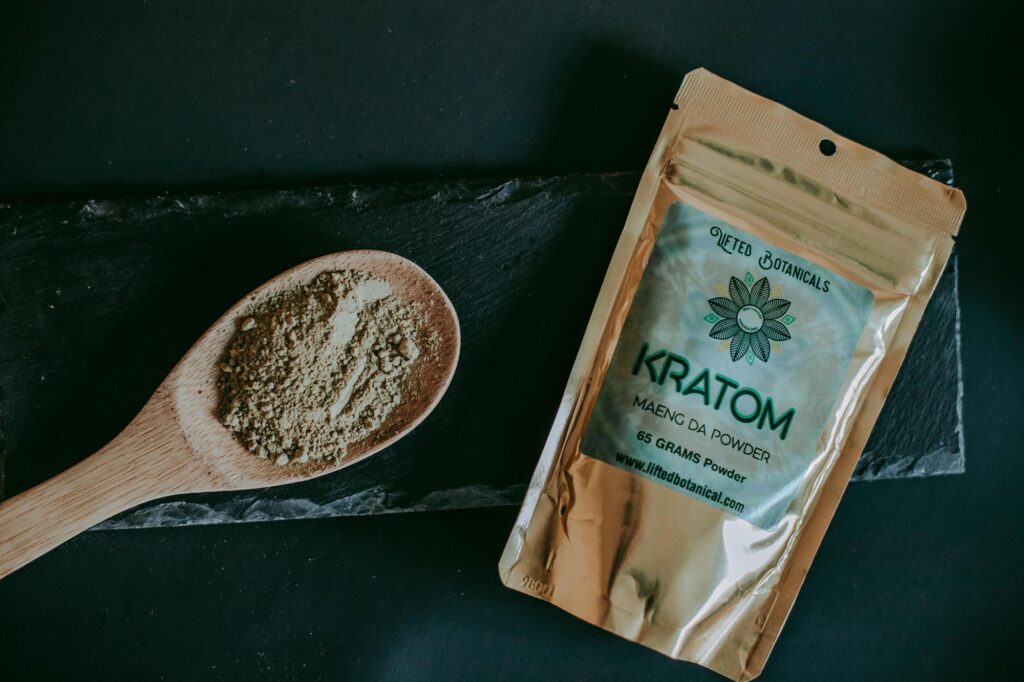As the popularity of alternative substances grows, understanding the distinction between Kratom and 7-OH (7-hydroxymitragynine), its potent alkaloid, becomes crucial for public health and safety.
Kratom, derived from the Mitragyna speciosa tree native to Southeast Asia, has gained attention for its pain-relieving and mood-enhancing properties. Within this plant lies 7-OH, a naturally occurring compound that’s significantly more potent than traditional Kratom.
The relationship between these substances raises important questions about their relative dangers:
- Kratom contains multiple alkaloids with varying effects
- 7-OH represents just one concentrated compound
- Natural vs. synthetic forms carry different risks
- Potency levels differ dramatically between the two
This exploration delves into the critical differences between Kratom and 7-OH, examining their unique properties, effects, and potential dangers to determine which substance presents a greater risk to users seeking alternative remedies.
It’s essential to note that while some may seek out these substances for their purported benefits, they can also lead to dependency and withdrawal symptoms similar to those experienced with opioids. In such cases, an Opioids Detox Program could be beneficial. Furthermore, after the detox process, an Aftercare Program can provide necessary support for individuals transitioning away from substance use.
Understanding Kratom and 7-OH
Mitragyna speciosa, commonly known as Kratom, is a tropical tree native to Southeast Asia. This fascinating plant contains over 40 active compounds, with mitragynine and 7-hydroxymitragynine (7-OH) being the primary alkaloids responsible for its effects.
Kratom’s Natural Alkaloid Profile
Kratom’s natural alkaloid profile typically includes:
- Mitragynine: 1-2% concentration
- 7-OH: 0.01-0.05% concentration
These compounds interact with the body differently. Mitragynine produces mild stimulant effects at lower doses, shifting to pain-relieving and sedating effects at higher amounts. 7-OH, despite its lower concentration, packs a much stronger punch – it’s 13 times more potent than mitragynine and 46 times more potent than morphine.
The Safety Concern of Potency Difference
The stark difference in potency between these compounds creates a significant safety concern. While natural Kratom contains minimal 7-OH, synthetic versions can concentrate this powerful alkaloid to dangerous levels. Raw Kratom leaf typically provides a balanced alkaloid profile, but processed extracts can alter this natural ratio, potentially increasing risks.
Mechanism of Action in Kratom and 7-OH
Both kratom and 7-OH target the brain’s opioid receptors, but their interactions differ significantly.
Mitragynine
Mitragynine, a major alkaloid in kratom, acts as a partial agonist at the mu-opioid receptors, creating milder effects compared to traditional opioids. It also functions as a competitive antagonist at the delta receptors, which may explain its reduced risk for respiratory depression. This contributes to the overall pharmacological profile of kratom and 7-OH, as both compounds exhibit distinct but overlapping opioid activity.
7-OH
7-OH (7-hydroxymitragynine), the more potent metabolite, demonstrates a much stronger binding affinity to mu-opioid receptors—13 times more potent than morphine. This heightened potency translates to:
- Intense analgesic effects
- Increased risk of dependency, which can lead to opioid addiction
- Greater potential for adverse reactions
Other Pharmacological Actions
The pharmacological actions of these compounds extend beyond opioid receptors. They interact with:
- Serotonin receptors
- Dopamine D1 receptors
- Alpha-2 adrenergic receptors
These additional interactions contribute to the substances’ complex effects on mood, energy levels, and cognitive function. 7-OH’s stronger receptor binding creates a higher risk profile, making it potentially more dangerous than mitragynine in isolation.
Risks and Dangers Associated with Kratom and 7-OH Use
Regular Kratom use brings significant health concerns:
- Physical Dependency: Users often experience withdrawal symptoms like muscle aches, insomnia, and irritability when stopping use
- Mental Health Impact: Anxiety, depression, and mood swings can develop with prolonged use
- Liver Function: Some users report elevated liver enzymes and potential organ stress
7-OH presents even more severe risks:
- Potent Respiratory Effects: The substance can cause dangerous breathing suppression at much lower doses than traditional Kratom
- Increased Overdose Risk: Its higher binding affinity to opioid receptors makes accidental overdose more likely
- Synthetic Dangers: Lab-created 7-OH variants can be:
- Up to 13 times more potent than natural forms
- Harder to dose accurately
- Mixed with unknown substances
Critical Warning Signs:
- Severe drowsiness
- Shallow breathing
- Confusion or disorientation
- Nausea and vomiting
- Loss of consciousness
The risk profiles of kratom and 7-OH differ significantly. While natural kratom carries its own set of risks, particularly with long-term use or high doses, 7-OH stands out as especially concerning due to its enhanced potency and the unpredictable nature of synthetic versions. Compared to kratom, 7-OH poses a more immediate danger to users—especially those experimenting with concentrated extracts or synthetic analogs—due to its stronger and faster-acting effects on opioid receptors.
Regulatory Landscape Surrounding Kratom and 7-OH
The FDA has issued multiple public health advisories about kratom, warning consumers not to use kratom-containing products. The agency maintains that kratom has no FDA-approved uses and carries significant safety risks. They’ve linked kratom to numerous deaths, though many cases involved other substances.
The DEA attempted to classify kratom as a Schedule I controlled substance in 2016 but withdrew this action after public outcry. 7-OH remains unscheduled at the federal level, yet its synthetic form is considered an analog of mitragynine.
State regulations paint a complex picture:
- Complete bans: Alabama, Arkansas, Indiana, Rhode Island, Vermont, Wisconsin
- Age restrictions: Illinois, New Hampshire (21+ only)
- Regulated sales: Utah, Nevada (requires proper labeling)
- Legal status: Available in most other states
The American Kratom Association advocates for the Kratom Consumer Protection Act, pushing for standardized testing and manufacturing practices rather than outright bans. This legislation has been passed in several states, creating a framework for safe, regulated kratom products while maintaining consumer access.
Detection Methods for Mitragynine and Challenges with Identifying 7-OH
Drug testing for Kratom and its compounds presents unique challenges in clinical settings. Standard drug tests don’t typically screen for mitragynine or 7-OH, requiring specialized testing methods.
Common Testing Methods for Mitragynine:
- Liquid chromatography-mass spectrometry (LC-MS)
- Gas chromatography-mass spectrometry (GC-MS)
- Immunoassay screening tests
7-OH Detection Challenges:
- Extremely low concentrations in natural Kratom (less than 0.02%)
- Rapid metabolization in the body
- Complex extraction processes
- High cost of specialized equipment
- Limited availability of reference standards
Labs face significant hurdles when attempting to detect 7-OH due to its molecular instability and quick breakdown in biological samples. The compound’s structural similarity to other alkaloids can lead to false positives, requiring additional confirmation testing.
Recent developments in testing technology have improved detection accuracy, yet many facilities lack access to these advanced methods. This limitation impacts both clinical diagnosis and research efforts to understand the full scope of 7-OH’s effects.
Treatment Options for Managing Dependence on Kratom or 7-OH
Breaking free from Kratom or 7-OH dependency requires a personalized treatment approach. Medical professionals often prescribe buprenorphine as a primary medication to help manage withdrawal symptoms. This medication works by:
- Reducing cravings
- Minimizing physical discomfort
- Stabilizing brain chemistry
- Preventing severe withdrawal effects
The path to recovery extends beyond medication. A comprehensive healing journey includes:
- Individual Counseling – Addressing underlying emotional triggers and developing healthy coping mechanisms
- Group Therapy – Building connections with others who understand the challenges of dependency
- Behavioral Therapy – Learning new patterns to replace substance use habits
- Family Support Sessions – Healing relationships and creating a strong support system
The intensity of treatment varies based on individual needs. Some people benefit from:
- Residential treatment programs
- Outpatient therapy sessions
- Support group meetings
- Regular check-ins with healthcare providers
Medical supervision remains crucial throughout the treatment process. Healthcare providers monitor vital signs, adjust medication dosages, and ensure safe progression through withdrawal. This careful oversight helps prevent complications and increases the likelihood of successful recovery.
Psychological support plays an equally vital role in long-term recovery. Trained therapists help individuals:
- Identify triggers
- Develop stress management techniques
- Build self-awareness
- Create relapse prevention strategies
For those seeking expert addiction treatments, SoCal Detox offers personalized care and support in Orange County, CA.
Conclusion: The Greater Danger Between Kratom and 7-OH Revealed
Based on scientific evidence and clinical observations, 7-hydroxymitragynine (7-OH) emerges as the more dangerous substance between the two. Its heightened potency – 13 times stronger than mitragynine – creates an intensified risk profile. The rapid onset and powerful binding to opioid receptors make 7-OH particularly concerning for dependency and overdose potential.
While natural Kratom carries its own risks, the concentrated presence of 7-OH, especially in synthetic forms, presents a more immediate threat to user safety. The challenges in detecting and regulating 7-OH compounds add another layer of danger, as users might unknowingly consume unsafe quantities of this potent alkaloid.
The stark contrast in safety profiles points to 7-OH as the substance requiring more careful monitoring and stricter control measures to protect public health.
Your Path to Recovery Starts Here
Breaking free from Kratom or 7-OH dependency isn’t a journey you need to face alone. At SoCal Detox, our experienced team understands the complexities of substance use and provides personalized, holistic care tailored to your unique needs.
Our peaceful Laguna Beach location offers:
- Professional medical supervision during detox
- Evidence-based treatment approaches
- Holistic healing methods
- Compassionate, judgment-free support
- Individualized recovery plans
Ready to take the first step? Our caring team is here 24/7 to answer your questions and guide you toward lasting recovery. Your well-being matters, and we’re committed to supporting you every step of the way.
Whether you need detox or residential treatment, we have tailored solutions for you.
Contact SoCal Detox today at (888) 590-0777 for a confidential consultation.
Your new life awaits – reach out now.

